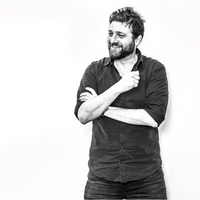Gad Marcus
Ono Academic College, Education and Society, Faculty Member
Research Interests:
Research Interests:
As we hear nowadays so much about ongoing discrimination, whether based on sexual or racial stereotypes, I have decided to devote this paper to show how education as formation-or Bildung-can and should constantly serve as a reminder that... more
As we hear nowadays so much about ongoing discrimination, whether based on sexual or racial stereotypes, I have decided to devote this paper to show how education as formation-or Bildung-can and should constantly serve as a reminder that all human beings, even in all their differences, are equal. While I truly believe that there should be no need to have to present an argument for this, I will do so, based on my understanding of Bildung in accordance with Heidegger and Buber as well as Jewish Thought.
Research Interests:
IntroductIon When Hannah Arendt writes about a gap between the past and the future, her main concern is our inability to dwell in this gap, that is, in the present. She writes that a gap between the past and the future has become “a... more
IntroductIon When Hannah Arendt writes about a gap between the past and the future, her main concern is our inability to dwell in this gap, that is, in the present. She writes that a gap between the past and the future has become “a tangible reality and perplexity for all,”1 yet “that we seem to be neither equipped nor prepared for this activity, of settling down in the gap between past and future.”2 Furthermore, Arendt writes about the thinking that occurs in this gap. Describing how our present thoughts are influenced by the past and future she suggests that both, the future and the past, “whose origin is infinity,” should be understood to produce “a third force.” This third force, which she describes as “diagonal force, whose origin is known, whose direction is determined by past and future, but whose eventual end lies in infinity, is the perfect metaphor for the activity of thought ... [it] remains bound to and is rooted in the present.”3 What leads Arendt to this suggestion is ...
Research Interests:
To explore how one can settle and think in the gap, I have decided to draw on the Jewish tradition. Although this article brings Arendt’s thought into conversation with education, the specific focus of inquiry within the Jewish tradition... more
To explore how one can settle and think in the gap, I have decided to draw on the Jewish tradition. Although this article brings Arendt’s thought into conversation with education, the specific focus of inquiry within the Jewish tradition is, more specifically, on studying. The Jewish notion of “study for study’s sake” will serve here as an example of how to settle and think in the gap. Furthermore, it will unveil some interesting connections and parallels to Arendt’s thoughts on education and our overall duties towards society. Ultimately, by suggesting further directions for research, this article serves as a starting point for a reevaluation of whether thinking and settling down in the gap may after all be possible, even without necessarily being connected to tradition.
